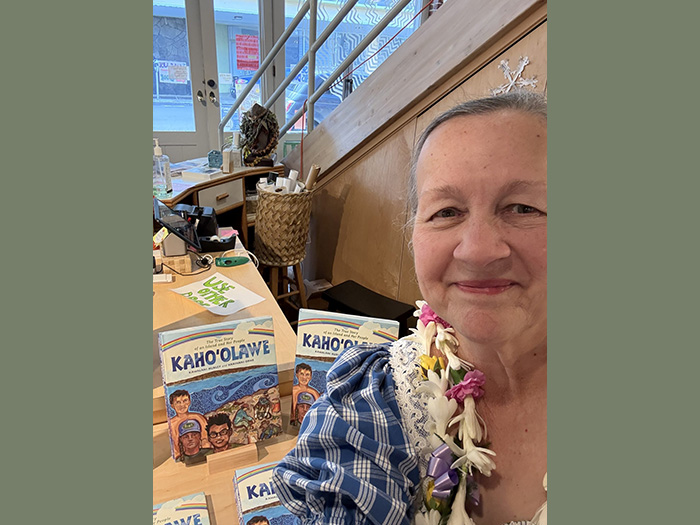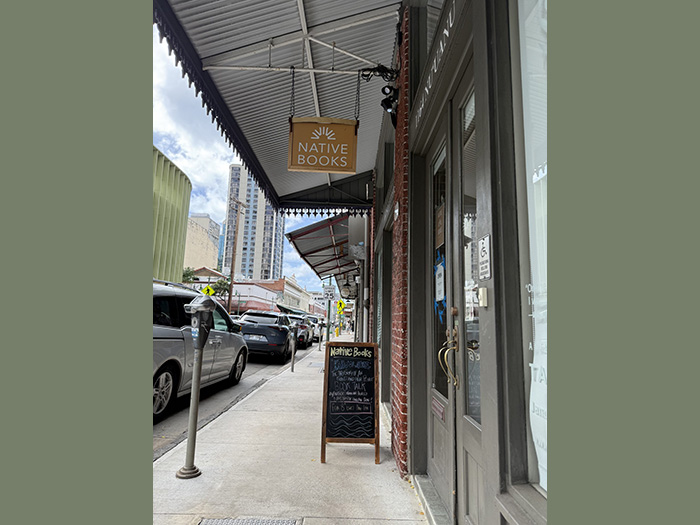What started out as a bit scary turned out to be such fun! I’d never been interviewed for public radio before, so I was nervous. 
Editor Catherine Cluett Pactol made me feel right at home.
Honestly, I can talk about the book all day, and I think I did!
Because of time and space limitations, she couldn’t include everything we’d talked about. She did a great job in focusing on the best parts for the interview.
BUT what was left out was my heartfelt aloha for the book’s wonderful illustrator, Harinani Orme. Harinani’s art is richly textured and vividly colorful and based on tons of research. She is amazing, and I am grateful to call her my friend.
Catherine asked for a photo of me with the book. Anyone who knows me knows I don’t like being photographed, but duty called! So out to our lanai I went with my husband, Tim, in tow.
Mahalo to Hawai’i Public Radio for featuring Kaho’olawe: The True Story of an Island and Her People! Read the article and listen to the interview here.
All proceeds benefit the Protect Kaho’olawe ‘Ohana. Mahalo nui to Carol Hinz and the team at Millbrook/Lerner!

























